Out of Auckland: Far North Kingfish – Part II
At the end of the Part I I (Far North Kingfish – Part I) I had hooked and lost a good sized kingfish across a shallow reef. Craig and I continued up the estuary but after a couple of hours without any further sightings our time had come to leave. We hopped into the van and headed north to Parengrenga Harbour: a name of mythical grandeur in the fishing realm in New Zealand. This would be my first visit and my thoughts were swirling with tales of big snapper, trevally and kingfish to be caught by fly on shallow flats.
The massive white silica dunes were impossible to miss from the road.
And then the vast expanse of flats hits you when you get down at water level … the scene looked like a semi abstract modern landscape painting.
A sandy beach that transitioned into a wide flat rock shelf that bordered a relatively shallow channel where the tide was funnelled along at fairly good rate. Again a perfect predator haunt. So it was stepping out with a handful of rods to get to the water.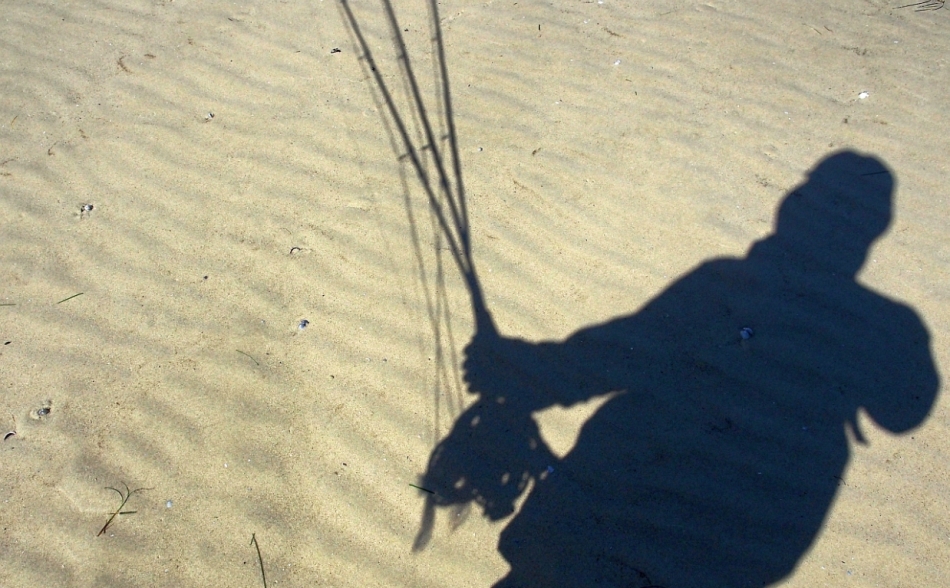
We were using Rio Outbound lines with sinking tips and weighted flies to get down the water column in the moving water.
 Craig elected to go for slow deep drifts and hit the first fish that put a healthy bend in his rod.
Craig elected to go for slow deep drifts and hit the first fish that put a healthy bend in his rod.
Easy to land from the flat ledge.
 The obligatory fish and fly rod photo:
The obligatory fish and fly rod photo:
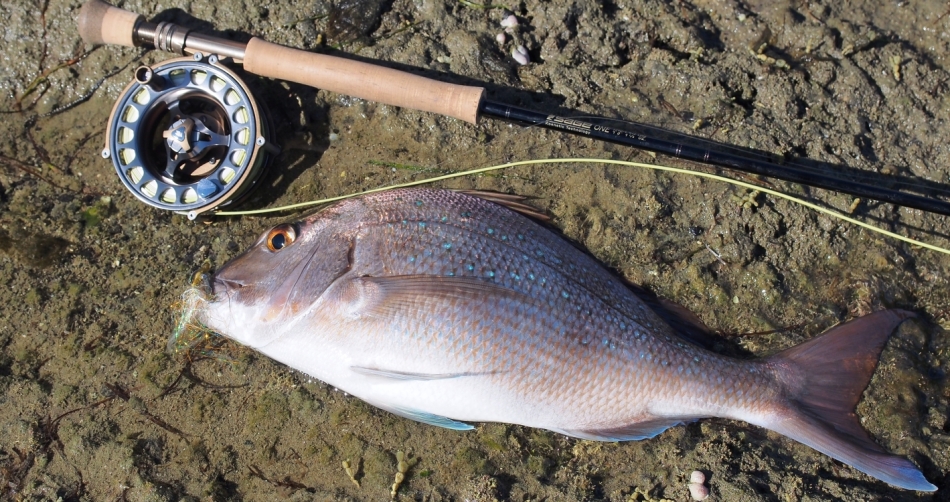 After posing it was returned to grow some more for the next visit.
After posing it was returned to grow some more for the next visit.
Meanwhile frequent schools of smallish kahawai roamed through and provided plenty of entertainment for me. There were lots of mini- bust ups and piper skipping in panic, but even with our bigger kingfish flies all we could hook were small kahawai.
Meanwhile the wind was slow picking up and any chances for sight fishing were effectively gone. The tide was rising and coming over the ledge and the current quickening in pace.
I was having a kahawai fest and learned that with a roly-poly retrieve you reef the line in quick smart, hook a fish,and without bothering to remove the rod from your armpit, just haul the madly cavorting fish all the way to your feet. No danger of a trout strike!
Somewhere after the twentieth fish or so I was working like a well oiled machine on another school of kahawai. Shoot the line out, pause to sink, rod tucked in and strip, strip, strip: wham!
Only this wasn’t no juvenile kahawai, and it only took another couple of seconds to realise this weren’t no kahawai either: a runaway green-backed hoodlum that felt every bit as weighty as the first one from the morning. Within seconds I was well into the backing and Craig came wading over and grabbed my camera to take some photos as the Sage 10 weight arched over as I cranked up the drag. This fish had well over a hundred meters out when it slowed and stopped. In that position it was over the other side of the channel and I didn’t know if there were rocks over there or not. But this time the hook held- and so did the fish – it was simply holding position facing up into the current. This was rather unexpected behavior, but Craig was all for taking advantage of this docility: “Reel it all back in – but don’t upset it!”
So I did. Slowly, steadily it came in over the next few minutes. Meanwhile the line was collecting every bit of seaweed going along the current and it was hanging like a disheveled clothesline.
I backed up from the edge of the rock ledge and Craig moved over and started plucking weed off at the rod tip. I got it back into the channel and when it was about 10 meters out it sensed trouble and buzzed off again, at a slower rate, and sulked again. This pattern repeated a couple more times, so that after about 15 minutes we had out first sighting of a nice big yellow tail. I was handling it with a bit more authority now, confident that it was definitely tired and that the tackle was equal to stepping up the pressure. It thrashed a bit as it neared the rock ledge but thanks to the rising tide the water was over knee deep and enough to swim it in to beach it. But I keep wading back and got it safely about 3-4 meters past the edge. Craig was wading quietly behind it to help shepherd it up into the shallows. I was already mentally planning the grip and grin shots.
Then it happened -again: the hooked pulled out and the fly catapulted into the air. Time froze. I stood there gob smacked, speechless. Craig didn’t see what had happened but looked up at me and noticed the rod was now straight up with a loose line waving in the breeze. He clicked and made a grab for the fish’s tail as it too had not reacted to its hook-less freedom. But within a split second as Craig reached down his hand closed on empty water as the fish scythed its way past him, swirling back into the sanctuary of the channel depths. It was a decent fish, easily bigger than my 7 kilo best. Craig put it at 9 or 10 kilos.
We saw out the evening as the tide continued to swell, the sky warm and red as sunset coloured the western horizon. As for me, sometimes you know that your aren’t going to get another one that day.
We headed off and spent the night at a camp ground, tired enough that even sleeping in a van was no obstacle to falling alseep in pretty quick time.
The next morning up before dawn and back to the same spot.
Parengarenga was beautiful at sunrise …
A dozen or so small kahawai obliged to my fly and I even managed to foul hook four piper. But no hoodlums crashed the party. Even a berley trail Craig engineered attracted only dozens of small kahawai and a few juvenile trevally. The kingfish mojo of yesterday was gone – you could feel it.
We headed south and stopped at a wharf in Mangonui where Craig tried for kingfish with a deep, slow presentation.
However no response. Around this point the van started misbehaving – it was losing water from the radiator and threatening to meltdown every ten or fifteen minutes. We lost count of the number of times we stopped on that drive back – filling up every bottle we had at every possible water source. Craig even dashed down the road and across a paddock to fill up bottles in a cattle trough. The problem was I had a bus to catch back to Auckland from Kerikeri and Craig was absolutely determined that come hell or lack of water was not going to stop us making that rendezvous.
And miraculously we did – with ten minutes to spare.
Thus ended the trip. Two fish hooked and lost, but my fishing future was totally changed. Kingfish were no longer something that was like waiting to win lotto. The switch had flicked on in my mind. It was now real: I could plan to pursue them and even hook them – and hopefully, with some angler’s luck, even land one or two. It was a quiet but deep revelation: Kingfish on the fly and land based is a low percentage game even compared to saltwater fly in general, but when you succeed, or even lose, the glow of achievement is with you every time you think back on those special encounters.
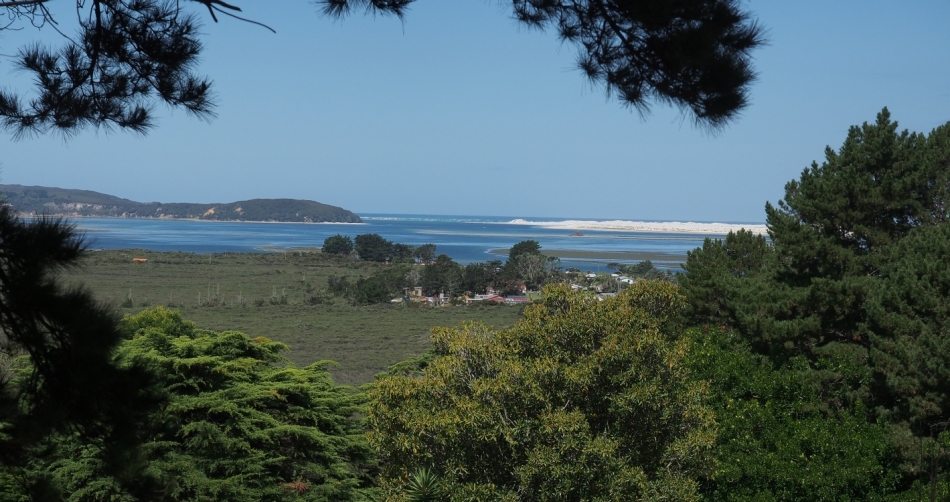
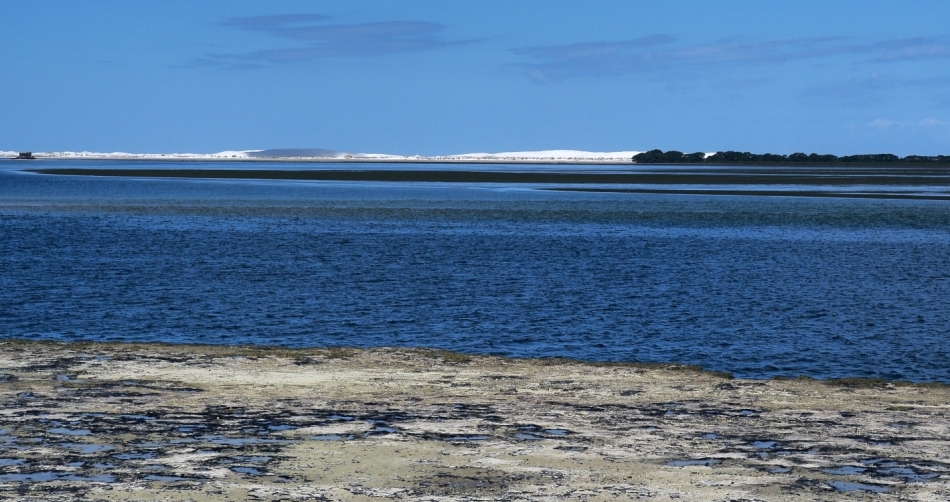











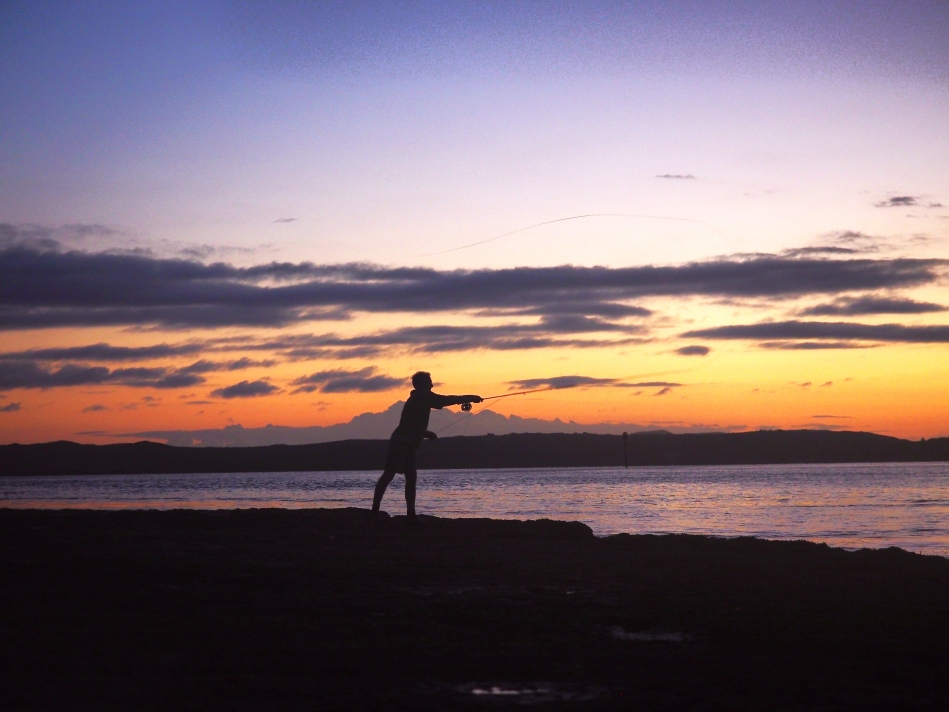

Leave a comment